Home Remedies For Skin Tags: 12 Easy Natural Treatments
Utilize some everyday kitchen ingredients to effectively deal with skin outgrowths.

Image: Shutterstock
Skin tags affect people of all ages, not just the elderly. Many people regard these painless and harmless lesions as unappealing and want to get rid of them. If you want to learn how to remove them with different home remedies for skin tags, you are in the right place. But first, keep reading to learn more!

Acrochordons, commonly known as skin tags, are common in persons over the age of 60. They are sometimes found in children and young adults as well. They show little growths on the skin’s surface, near the skin folds. They are most commonly found around the breasts, around the neck, under the armpits, in the groin folds, and over the eyelids.
The home and herbal remedies mentioned above are both low-cost and effective options to remove skin tags. At the end of the day, it boils down to whether you want to sweat it out at a dermatologist’s office or whether you want to try removing them at home. There are some cosmetic methods too. However, you need to read about the pros and cons of any of the methods as complications can arise from botched or incorrect removal procedures.
Here are some common questions answered for you.
Skin tags are usually uneven in appearance and brownish or skin-colored. To get rid of these growths, you don’t need to resort to expensive cosmetic or chemical treatments. Simple substances found around the house can be used to get rid of them quickly and cheaply. Please bear in mind that while homeopathic remedies, natural treatments, DIY remedies, and alternative therapies take a little longer than chemical treatments, they are comparatively safer.
Warts, skin tags, and other similar-looking skin growths are frequently misidentified. This article will assist you in quickly distinguishing and identifying skin tags. Keep reading to know more about skin tags and how to treat them!
In This Article
How To Identify Skin Tags
The funny thing is that most people are entirely unaware that they are living with skin tags! Quite often, skin tags fall off on their own due to friction and rubbing. The trouble arises when they don’t, and when they grow to a large enough size so as to cause embarrassment or even discomfort. Here are some key features to identify them:
- They look like little mushrooms with their skin stalks
- They are pendulum-like growths
- They are brown or flesh-colored
It is essential to cut off the blood supply to these skin tags if you want them to die and fall off naturally. Learn about the different types of skin tags in the next section.
Key Takeaways
- Tea tree oil, apple cider vinegar, and castor oil are some natural treatments that can be employed at home to eliminate skin tags.
- Before using any home cure, it is crucial to properly clean the affected region.
- The skin tag could take a few days or weeks to entirely disappear.
- It is advised to see a doctor if there is any discomfort or if the skin tag is in a delicate area.
Types Of Skin Tags
Based on their size, skin tags are differentiated into the following types (1).
- Small Skin Tags: These are tiny furrowed papules, usually 1-2 mm in width and height, commonly found on the neck and armpits.
- Mid-Sized Skin Tags: These are slightly larger, filiform skin tags and are about 5 mm long and 2 mm wide. They are found on various body parts apart from the neck and armpits.
- Large-Sized Skin Tags: These are attached to the skin by a stalk and are typically soft. They are usually found in the lower part of the body, such as the groin area.
You should also be aware of some skin growths that resemble skin tags like keratosis and benign lesions. Keratosis refers to a group of skin disorders characterized by the formation of rough, scaly skin patches. Benign lesions are skin growths that are not malignant.
 Trivia
TriviaCertain home remedies can help remove skin tags naturally. Here is a list of home remedies for skin tags removal that you can try.
How To Remove Skin Tags
- Apple Cider Vinegar
- Banana Peel
- Baking Soda
- Bloodroot
- Manuka Honey
- Witch Hazel
- Garlic
- Ginger
- Oils
- Juices
- Shea Butter
- Epsom Salt Bath
Get Rid Of Skin Tags At Home With These Remedies
1. Apple Cider Vinegar For Skin Tags

You Will Need
- A few drops of apple cider vinegar
- Cotton
- Duct tape or scotch tape
What You Have To Do
- Pour the vinegar onto a small piece of cotton and strap it to the skin tag. Use the tape to hold the cotton in place.
- Keep it on for a few hours.
How Often You Should Do This
Repeat twice a day.
Why This Works
According to anecdotal evidence, using apple cider vinegar for skin tags is an effective remedy as the acidity of the ACV aids quick shedding of the skin tag.
A blogger tried using apple cider vinegar to remove skin tags. He left it overnight and the tag fell off after 3-5 days without any bleeding or scarring. He adds, “I can’t believe a tag used to be there! I would use this method again if I had more skin tags! (i)”.
2. Banana Peel For Skin Tags

You Will Need
A banana peel
What You Have To Do
- Cut a small portion of the peel.
- Apply the fibrous part (white side) of the peel on the skin tag for an hour or so.
How Often You Should Do This
Repeat the process for a few days until the skin tag falls off.
Why This Works
Anecdotal evidence suggests that banana peels are effective in removing warts with their enzymes and acids. The same chemicals found in the peel might help to shed skin tags.
3. Baking Soda For Skin Tags

You Will Need
- 1/2 teaspoon of baking soda
- A few drops of castor oil
What You Have To Do
- Mix a little castor oil with baking soda to form a paste. Keep in mind that this can be very sticky.
- Apply this paste on the skin tag.
- Rinse it off after 1-2 hours.
How Often You Should Do This
Repeat the process for 2-4 weeks, and you will notice the skin tag disappearing slowly.
Why This Works
Castor oil and baking soda alter the pH of the affected area, which helps to remove skin outgrowths like skin tags and even warts. Researchers tested baking soda with castor oil for wart removal. After applying the mixture, warts clotted in 24 hours, dried up in 48 hours, and cleared without scars in a week. No new warts appeared for three months. The study suggests baking soda may work by changing the pH and reducing oxygen, making it hard for the virus to survive (2).
4. Bloodroot For Skin Tags
You Will Need
- Bloodroot paste (Black salve)
- Bandage
- Hydrogen peroxide
- Cotton
What You Have To Do
- Clean the skin tag and the surrounding area with a cotton ball dipped in hydrogen peroxide.
- Apply the black salve on this and cover it with a bandage.
- Leave the bandage on for a few hours.
How Often You Should Do This
Change the bandage 3-4 times a day. Repeat the process of cleaning with hydrogen peroxide and applying the bloodroot paste. Use this remedy continuously for a maximum of three days only.
Why This Works
Native to the United States and Canada, the bloodroot herb is a strong remedy to remove skin tags, moles, and warts. It is even recommended by herbalists to remove tumors (3). It cuts off circulation to the skin tag, making it fall off by itself after a few applications.
Caution
Purchase black salve paste that contains only bloodroot and water. Additional ingredients can cause adverse reactions in combination with bloodroot. Do not ingest it as bloodroot can be poisonous.
5. Manuka Honey For Skin Tags
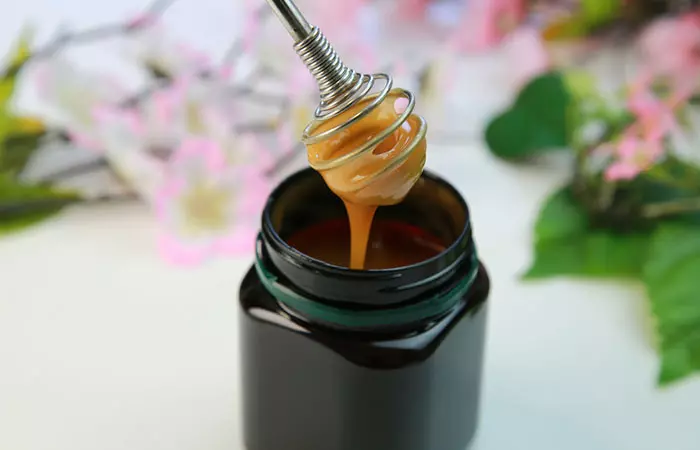
You Will Need
- Manuka honey
- Band-aid
What You Have To Do
- Apply honey to the skin tag and cover with a band-aid.
- Keep the band-aid on for a few hours.
How Often You Should Do This
Repeat this a few times during the day.
Why This Works
Manuka honey is a non-peroxide type of honey. Applying it to the skin tag may help restrict its oxygen supply, and this helps in its removal. Honey also has wound healing properties that will help to heal the skin faster once the skin tag has fallen off. It also prevents the formation of scars (4).
6. Witch Hazel For Skin Tags
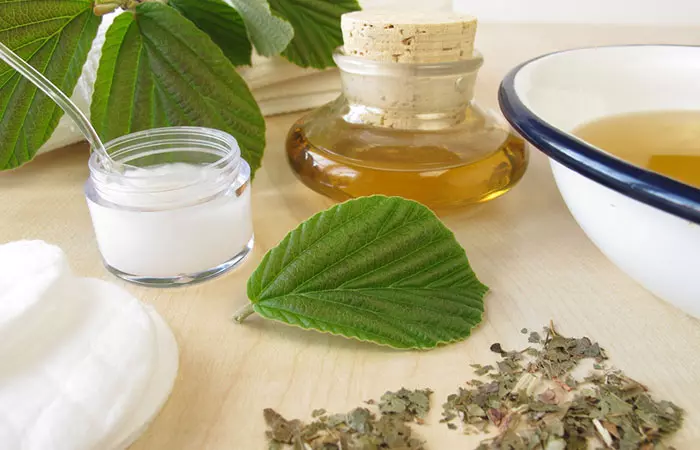
You Will Need
Witch hazel extract
What You Have To Do
Apply the extract on the skin tag and let it dry.
How Often You Should Do This
Reapply 3-4 times a day.
Why This Works
Witch hazel is an astringent and its pH-balancing properties can help you get rid of the skin tag (5).
7. Garlic For Skin Tags

You Will Need
1-2 garlic cloves
What You Have To Do
- Crush the fresh garlic cloves into a paste.
- Now, apply the paste on the skin tag.
- Wash it off after an hour or so.
How Often You Should Do This
Repeat twice a day.
Why This Works
Garlic is antibacterial and antifungal in nature (6). After a few days, the tag will fall off, leaving behind smooth skin.
8. Ginger For Skin Tags

You Will Need
Ginger slices
What You Have To Do
- Clean the skin tag and the surrounding area. Pat it dry.
- Rub a slice of raw ginger on it for a minute or two.
- Do not rinse away the juice that comes out of the ginger piece and onto your skin.
How Often You Should Do This
Do this 5-6 times a day.
Why This Works
Ginger contains a wide range of bioactive compounds that possess healing and antimicrobial properties (7). These properties have been effective in removing skin tags in some people.
9. Oils For Skin Tags

(a) Castor Oil For Skin Tags
You Will Need
- 1-2 drops of castor oil
- Bandage
What You Have To Do
Apply castor oil on the skin tag and cover it with a bandage.
How Often You Should Do This
Reapply castor oil twice or thrice a day.
Why This Works
The strong phytochemicals present in castor oil are often used to remove warts, moles, and skin tags. An additional benefit of using this oil is that it has wound healing and skin conditioning properties. Once the skin tag is gone, your skin will heal quickly and be hydrated and moisturized (8).
(b) Coconut Oil For Skin Tags
You Will Need
Organic coconut oil
What You Have To Do
Apply coconut oil on the skin tag and leave it on.
How Often You Should Do This
Repeat every morning and night.
Why This Works
Coconut oil contains lauric acidi A saturated fat that contains antibacterial qualities and is considered an excellent remedy for various skincare issues. and alpha-tocopheroli A type of vitamin E that helps prevent cell damage brought on by free radicals and boosts the immune system. (9). Anecdotal evidence suggests these compounds might help to remove skin tags in a matter of a few weeks.
(c) Tea Tree Oil For Skin Tags
You Will Need
- 1-2 drops of tea tree oil
- 1-2 drops of olive oil, avocado oil or coconut oil
What You Have To Do
Dilute the tea tree essential oil in the carrier oil and apply the blend on the skin tag.
How Often You Should Do This
Repeat this 2-3 times every day until the skin tag sheds.
Why This Works
Using tea tree oil for skin tags is a widely popular home remedy. A multifaceted essential oil, it dries up the skin tag and helps in speeding the shedding process. It is also antimicrobial in nature. A study suggests that tea tree oil may help treat warts, which are caused by HPV due to its strong antiviral and anti-inflammatory properties. The key compounds in TTO, terpinene-4-ol and α-terpineol, stop the virus from multiplying and reduce inflammation, which can help with pain relief (10). Therefore, it might help with skin tags also.
(d) Oregano Oil For Skin Tags
You Will Need
- 2-3 drops of oregano oil
- 5 drops of coconut oil
- Cotton swab
What You Have To Do
Mix the oils and apply the mixture on the skin tag.
How Often You Should Do This
Do this 2-3 times daily.
Why This Works
After tea tree oil, oregano oil is one of the most popular essential oils for skin tags. It has antimicrobial, anti-inflammatory, and antioxidant properties. It is often used for treating skin conditions like acne, eczemai A skin disorder that results in dry, itchy, and rough skin often caused by dry weather, dust mites, and soaps. , psoriasisi A skin disorder wherein the skin cells aggregate, resulting in scales and dry, itchy regions. , and rosaceai A disorder in which some facial blood vessels expand, appearing reddened on the cheeks and nose. . It is also used to remove skin tags by limiting blood supply to them (11).
(e) Jojoba Oil For Skin Tags
You Will Need
1-2 drops of jojoba oil
What You Have To Do
- Massage the skin tag and the surrounding area with the oil.
- Leave it on. Do not rinse it off.
How Often You Should Do This
Apply in the morning and at night, before going to bed.
Why This Works
The exact mechanism of action of jojoba oil on skin tags is still not known, but anecdotal evidence suggests it has helped a lot of people to easily shed off their skin tags in a matter of just 7-10 days.
(f) Lavender Oil For Skin Tags
You Will Need
- A drop of lavender essential oil
- 1-2 drops coconut oil
What You Have To Do
Apply a mixture of the oils mentioned on the skin tags.
How Often You Should Do This
Do this twice a day.
Why This Works
Lavender essential oil, apart from being soothing for the skin, has antiseptic properties (12). It might be a good remedy for skin tags and other skin ailments.
(g) Lemon Oil For Skin Tags
You Will Need
Lemon essential oil
What You Have To Do
Apply this oil on the skin tags and leave it on.
How Often You Should Do This
Repeat this 2-3 times a day.
Why This Works
Lemon oil is an astringent and it might help remove the excess oils and water from the skin tag site (13). This causes the skin tag to shed by itself.
Caution
Do not expose the skin to sunlight after applying this oil. It can lead to sunburns as lemon essential oil is photosensitive.
(h) Neem Oil For Skin Tags
You Will Need
- 1-2 drops neem oil
- Bandage
What You Have To Do
Apply neem oil to the skin tag and cover with a bandage.
How Often You Should Do This
Replace the bandage every few hours, accompanied by the reapplication of the essential oil.
Why This Works
Neem oil contains essential fatty acids and other bioactive components that might help in easily removing the skin tag without any surgical procedure. Also, it is a great remedy to remove warts (14).
(i) Peppermint Oil For Skin Tags
You Will Need
- 2-3 drops of peppermint essential oil
- 2-3 drops of castor oil
What You Have To Do
- Apply a blend of these two oils on the skin tags.
- Leave the oil on overnight.
How Often You Should Do This
Repeat this every night, before going to bed.
Why This Works
Peppermint oil has antimicrobial as well as anti-inflammatory properties (15). Anecdotal evidence suggests that in combination with castor oil, it not only can help remove the skin tags naturally but also might soothe the skin and reduce any swelling that may develop.
(j) Almond Oil For Skin Tags
You Will Need
Almond oil
What You Have To Do
- Rub almond oil around and on the skin tag.
- Leave it on.
How Often You Should Do This
Keep applying this oil every few hours.
Why This Works
Almond oil is rich in vitamin E (16). This vitamin E oil hydrates your skin and speeds up the healing process once the tag has fallen off. It also eases the process of decay and death of the skin tag and keeps your skin nourished.
(k) Clove Oil For Skin Tags
You Will Need
- 2-3 drops of clove oil
- 2-3 drops of rosehip oil
- Cotton swab
What You Have To Do
- Mix the clove oil and rosehip oil.
- Dip the cotton swab in this mixture and apply it to the skin tag.
- Leave it on for as long as possible.
How Often You Should Do This
Repeat this once or twice a day.
Why This Works
The potent phytochemicals in clove oil might cut off circulation to the skin tag and cause it to shed (17). Rosehip oil will help the skin heal quickly without any scars once the skin tag has been shed (18).
(l) Cinnamon Oil For Skin Tags
You Will Need
- Cinnamon oil
- Cotton swab
- Band-aid
What You Have To Do
- Apply the cinnamon oil to the skin tag with the cotton swab.
- Cover with a band-aid.
How Often You Should Do This
Reapply the oil twice a day. Use a fresh band-aid every time.
Why This Works
This folk remedy for skin tags and warts is actually worth giving a try. People have been able to get results in a couple of days with regular usage of this essential oil. Cinnamon oil is an antiseptic agent as well (19).
10. Juices For Skin Tags

(a) Lemon Juice For Removing Skin Tags
You Will Need
- Lemon juice
- Cotton ball
What You Have To Do
- Dip the cotton ball in lemon juice and apply it to the skin tag.
- Wash it off after some time.
How Often You Should Do This
Do this twice or thrice a week.
Why This Works
The citric acid in lemon juice removes the dead cells (20). In 2-3 weeks, you will notice that the skin tag is slowly decomposing.
(b) Pineapple Juice For Skin Tags
You Will Need
Fresh pineapple juice
What You Have To Do
- Squeeze out some fresh pineapple juice and apply it directly to the skin tag.
- Let it dry naturally.
How Often You Should Do This
Keep applying this juice every 2-3 hours. Repeat for a few days until your skin tag becomes invisible.
Why This Works
Pineapple juice is also known to work on moles and warts, apart from skin tags. Anecdotal evidence suggests that the proteolytici A class of enzymes that split lengthy, chain-like proteins into smaller pieces and then into their individual amino acid constituents. enzymes dry up the skin tag, causing it to fall.
(c) Fig Juice For Skin Tags
You Will Need
A few fig stems
What You Have To Do
- Crush the stems to extract the juice.
- Apply this juice on the skin tags and leave it on.
How Often You Should Do This
Repeat the application 2-4 times a day until the skin tag falls off.
Why This Works
Figs are widely used for their laxative properties, but very few people know about their ability to shed skin tags and similar skin outgrowths naturally. Though not scientifically proven, ficin, a proteolytic enzyme found in the stem juice, might cause the skin tag to shed by itself.
(d) Aloe Vera Juice For Skin Tags
You Will Need
Aloe vera juice or gel
What You Have To Do
- Massage the skin tag and the surrounding area for a minute or two with aloe vera juice.
- Leave it on till it dries.
How Often You Should Do This
Do this thrice a day.
Why This Works
The anti-inflammatory, antioxidant, and wound healing properties of aloe vera might help to get rid of skin tags and heal the skin quickly (21).
(e) Onion Juice For Skin Tags
You Will Need
- 2-3 onion slices
- 1 teaspoon salt
- 1/2 cup water
- Cotton ball
What You Have To Do
- Add the salt to the water and mix well. Soak the onion slices in this overnight.
- Apply this water to the affected area.
How Often You Should Do This
Repeat this 2-3 times a day. Use fresh onion-soaked water every day.
Why This Works
Often used to treat scars and improve skin texture, this remedy may help remove skin tags (22). Rich in sulfur-containing compounds, this commonly used vegetable also contains plenty of antioxidants and helps to heal scars (23) (24).
11. Shea Butter For Skin Tags
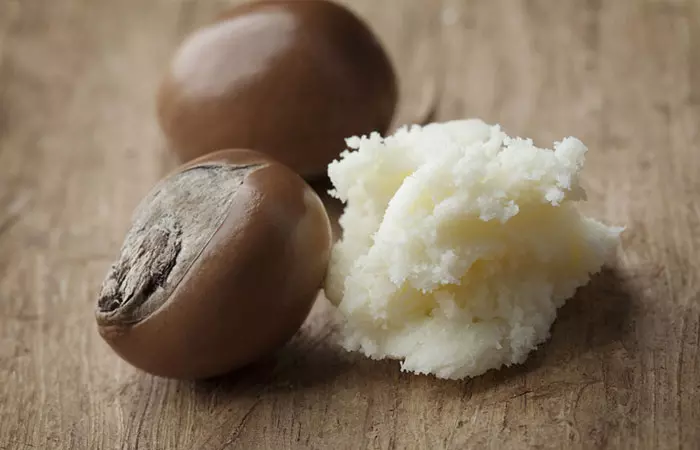
You Will Need
- Organic shea butter
- A drop of oregano essential oil
What You Have To Do
- Take a tiny amount of shea butter in your palm and melt it with the heat of your fingertips.
- Add the oregano essential oil to this and mix well.
- Apply this on the skin tags.
How Often You Should Do This
Use this remedy twice a day.
Why This Works
While the oregano essential oil will make the skin tag detach itself in due course of time, shea butter will ensure that the skin remains hydrated. It contains healthy fats that nourish the skin and heal and prevent scars (25).
12. Epsom Salt Bath
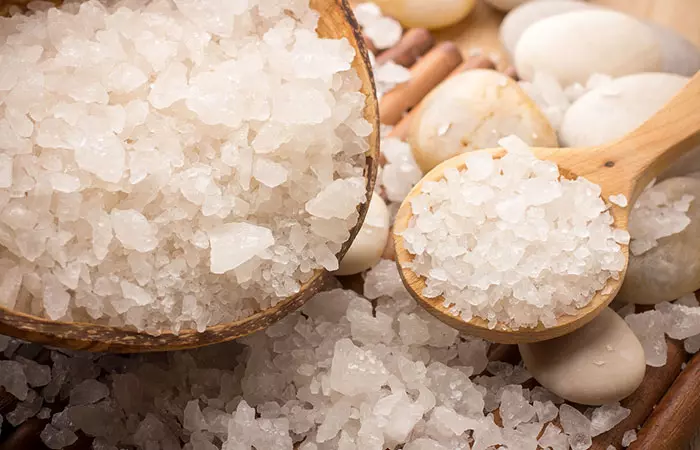
You Will Need
- 1 cup Epsom salt
- Warm water
- Bathtub
What You Have To Do
- Draw a warm bath and add Epsom salt to the water.
- Soak in this water for 10-20 minutes.
Alternatively, add half a teaspoon of Epsom salt to two tablespoons of water. Soak a cotton ball in this solution and place it on the skin tag for 15 minutes.
How Often You Should Do This
It is recommended to soak your body in Epsom salt water every alternate day. However, you can place the soaked cotton ball on the skin tag twice a day.
Why This Works
Epsom salt rebalances the pH of the skin and draws out all the toxins. It dries up the skin tag, which causes it to shed easily. An Epsom salt bath is also very relaxing for the muscles (26).
 Quick Tip
Quick TipHome remedies for skin tags are mostly based on anecdotal evidence rather than strong scientific research. While some natural ingredients may support better skin health, their effectiveness in directly removing skin tags is not fully proven. These remedies might work for some people, but results can vary, and there is no guarantee of success. In addition, certain treatments may cause irritation, discomfort, or complications, especially for sensitive skin. Naturally, if you do not see visible changes, it can be easy to go overboard and overuse them. So, to prevent you from causing more harm than good, we have discussed the safety concerns below.
Safety Concerns
While DIY methods for removing skin tags can be tempting, it is important to be aware of the potential risks involved. Attempting to remove a skin tag aggressively can increase the risk of:
- Infection
- Scarring
- Bleeding
If a skin tag is too stubborn, growing, or changing in appearance, it is best to consult a healthcare professional before attempting any home remedies for skin tags. They can properly assess the growth and recommend the most appropriate treatment.
Professional Removal Methods
If you want a doctor to remove a skin tag, there are a few ways they can do it.
Excision is the most common method for removing skin tags. It involves surgically cutting away the skin tag using a scalpel or scissors. Excision is often performed under local anesthesia, which numbs the area around the skin tag.
The cryotherapy method involves freezing the skin tag with liquid nitrogen. The extreme cold causes the skin tag to freeze and die. After a few days, the frozen tissue will fall off on its own.
The electrocautery method uses heat to destroy the skin tag. A heated probe is applied to the skin tag, causing it to burn and fall off.
Learn how to remove skin tags naturally with a simple-to-follow home remedy. Get rid of those pesky skin bumps by watching the video below.
Infographic: 4 Natural Ways To Get Rid Of Skin Tags
Skin tags can be bothersome and uncomfortable at times. They are usually painless and non-harmful. However, people may find them attractive and may want to remove them. To help you out, we have rounded up simple household ingredients you can use to remove skin tags from your skin naturally. Check out the infographic below to know more!
Some thing wrong with infographic shortcode. please verify shortcode syntax
Acrocordhons or skin tags are brown or flesh-colored growths on the skin that can be distinguished by the stalk that attaches them to the skin. You can remove skin tags by cutting off the oxygen supply or dissolving the growth, and several home remedies may help you with the process. Among the most popular home remedies for skin tags are apple cider vinegar, banana peels, Epsom salt bath, witch hazel, manuka honey, baking soda, fenugreek seeds, grapefruit seed extract, chamomile tea, calendula, turmeric, and bloodroot with cumin. Note that surgical methods to remove skin tags should not be tried at home and may be dangerous.
Dr. Sanusi Umar, MD, FAAD, says, “No matter how minor, surgery should never be performed by just anyone. If you have a skin tag that bothers you, you should go to a surgeon or a dermatologist to get it removed.”
Now that you know how to remove skin tags easily, what are you waiting for? Do not fear skin tags as they are unobtrusive and painless. There is a popular misconception that the removal of skin tags causes them to grow right back. There is no medical evidence that links removal with reappearance. So, go ahead and use the remedies mentioned in this article.
Never try to remove them by surgical means or by castration at home as this may cause infection and make it worse. Try these simple home remedies instead to get rid of them.
Frequently Asked Questions
What causes skin tags?
It is generally believed that skin tags occur more after midlife. They occur in both men and women. They are parcels of collagen and blood vessels bunched together under layers of skin, and should ideally be removed after they have made their appearance. The combination of weight and age usually leads to increased growth of skin tags. Hence, you need to control your weight to ensure that your skin stays firm, smooth, and healthy.
One of the most common causes of skin tags is obesity. Obese people have more skin folds and creases than normal people. Pregnant women too are susceptible to skin tags. This may be the result of the hormonal changes they go through. Diabetic people also develop skin tags. The use of illegal steroids also causes skin tags.
How should you care for skin tags after removal?
• Avoid scratching the area or rubbing it with pressure.
• Clean the area twice a day with an antibacterial soap.
• Use a good moisturizer to keep the skin nourished.
When stepping out in the sun, always use sunscreen with an ample amount of SPF as the skin is already sensitive in that area. It needs all the nourishment and protection it can get.
Is it normal for skin tags to get bigger?
Depending on the underlying cause, it is not unusual to see the skin tags getting bigger in size. These are generally benign growths and are nothing to worry about, apart from their cosmetic appearance.
Why do skin tags bleed so much?
A skin tag is essentially an extra growth of your own skin. When it is cut off or removed, there will obviously be bleeding, as with any other wound or cut. Usually, the bleeding is minimal or even none. However, when the location of the skin tag is close to a vein, it can bleed more than usual. Always use an antiseptic to clean the area and put on a band-aid to minimize the bleeding.
What is the fastest way to get rid of skin tags?
Professional skin tag removal methods are the fastest way to get rid of skin tags. Consult your healthcare provider to consider an excision, cauterization, or cryosurgery.
Is Vaseline good for skin tags?
Vaseline or petroleum jelly cannot remove skin tags. However, it can be used along with other removal techniques to protect the surrounding skin. You can also use it after the removal to cover the wound to protect it from infections.
Can you remove skin tags with toothpaste?
Possibly not. While there are a few anecdotal reports suggesting that toothpaste may be an effective skin tag removal method, there is a lack of evidence supporting this claim.
Can you cut off a skin tag with fingernail clippers?
It is not recommended to remove skin tags using clippers as they are blunt and may lead to scarring and bleeding.
Can you remove skin tags with nail polish?
Possibly. However, it is not recommended as the chemicals present in nail polish may harm your skin.
How do you remove skin tags with dental floss?
Wrap the floss around the skin tag and gently pull on it daily. The skin tag should completely dry out and fall off after a few days as the blood flow is restricted.
Illustration: Home Remedies To Remove Skin Tags Naturally
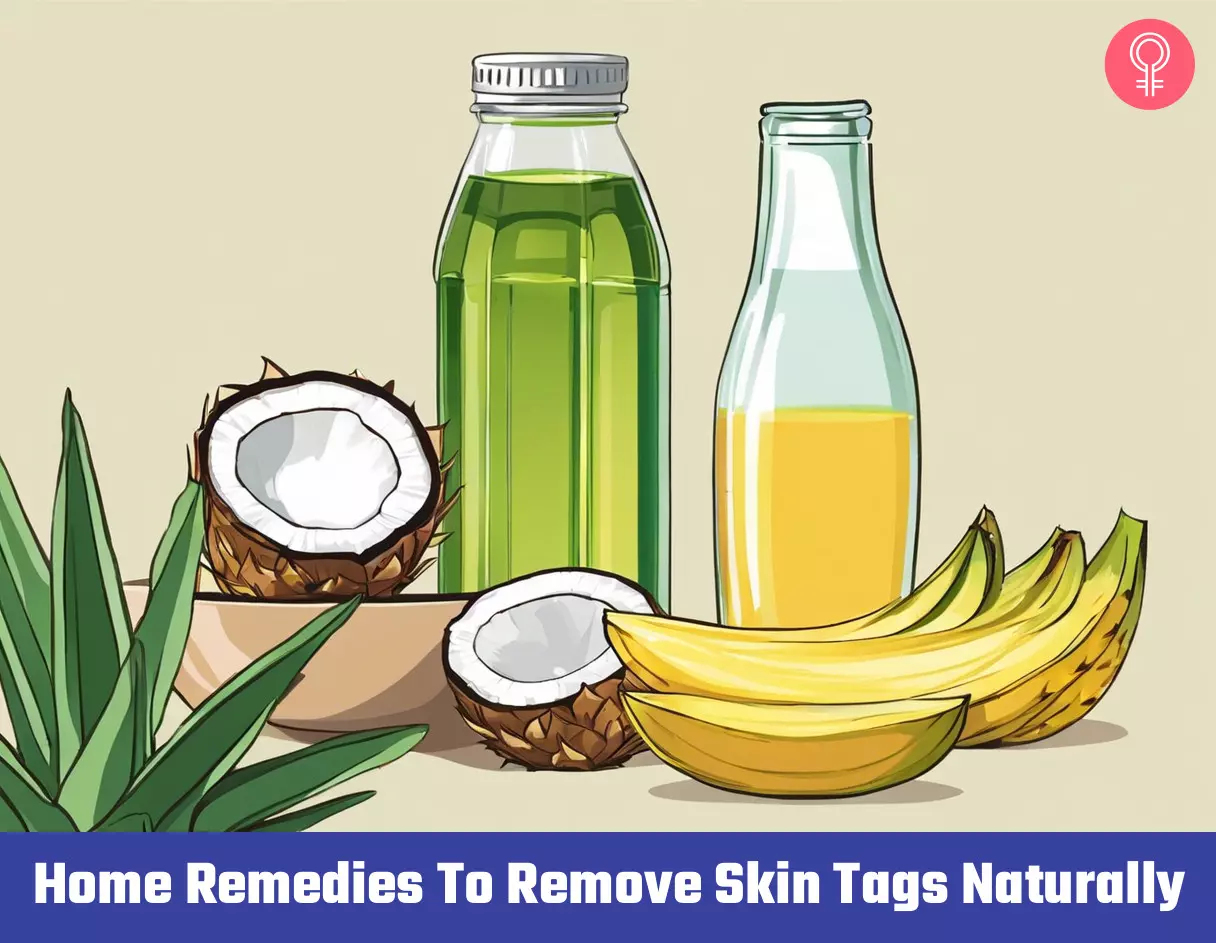
Image: Stable Diffusion/StyleCraze Design Team
Personal Experience: Source
StyleCraze's articles are interwoven with authentic personal narratives that provide depth and resonance to our content. Below are the sources of the personal accounts referenced in this article.
i. At home skin tag removal experiment with Apple Cider Vinegarhttps://dailywanderlust.wordpress.com/2012/05/02/at-home-skin-tag-removal-experiment-with-apple-cider-vinegar/
References
Articles on StyleCraze are backed by verified information from peer-reviewed and academic research papers, reputed organizations, research institutions, and medical associations to ensure accuracy and relevance. Read our editorial policy to learn more.
- Skin Tags
https://www.ncbi.nlm.nih.gov/books/NBK547724/ - Treatment of skin warts caused by human papillomavirus (HPV) by sodium bicarbonate (NaHCO3)
https://www.jetir.org/papers/JETIR180Z090.pdf - Bloodroot associated eschar
https://pubmed.ncbi.nlm.nih.gov/25046467/ - Honey: its medicinal property and antibacterial activity
https://www.ncbi.nlm.nih.gov/pmc/articles/PMC3609166/ - Antioxidant and potential anti-inflammatory activity of extracts and formulations of white tea rose and witch hazel on primary human dermal fibroblast cells
https://www.ncbi.nlm.nih.gov/pmc/articles/PMC3214789/ - Antimicrobial properties of allicin from garlic
https://pubmed.ncbi.nlm.nih.gov/10594976/ - The Amazing and Mighty Ginger
https://www.ncbi.nlm.nih.gov/books/NBK92775/ - Using a castor oil-balsam of Peru-trypsin ointment to assist in healing skin graft donor sites
https://pubmed.ncbi.nlm.nih.gov/12874484/ - Cocos nucifera (L.) (Arecaceae): A phytochemical and pharmacological review
https://www.ncbi.nlm.nih.gov/pmc/articles/PMC4671521/ - Topical Application of Tea Tree Oil for the Treatment of Verruca Vulgaris
https://pmc.ncbi.nlm.nih.gov/articles/PMC10587812/ - Cutaneous Polymeric-Micelles-Based Hydrogel Containing Origanum vulgare L. Essential Oil: In Vitro Release and Permeation Angiogenesis and Safety Profile In Ovo
https://pubmed.ncbi.nlm.nih.gov/37513852/ - Biological activities of lavender essential oil
https://pubmed.ncbi.nlm.nih.gov/12112282/ - Citrus Essential Oils in Aromatherapy: Therapeutic Effects and Mechanisms
https://pmc.ncbi.nlm.nih.gov/articles/PMC9774566/ - Azadirachta indica (Neem) as a Potential Natural Active for Dermocosmetic and Topical Products: A Narrative Review
https://www.mdpi.com/2079-9284/9/3/58 - Review article: The physiologic effects and safety of Peppermint Oil and its efficacy in irritable bowel syndrome and other functional disorders
https://pmc.ncbi.nlm.nih.gov/articles/PMC5814329/ - Therapeutic influences of almond oil on male rats exposed to a sublethal concentration of lead
https://www.ncbi.nlm.nih.gov/pmc/articles/PMC6997855/ - Clove (Syzygium aromaticum): a precious spice
https://www.ncbi.nlm.nih.gov/pmc/articles/PMC3819475/ - Rosehip extract and wound healing: A review
https://pubmed.ncbi.nlm.nih.gov/37605366/ - Therapeutic Potential of Cinnamon Oil: Chemical Composition Pharmacological Actions and Applications
https://pmc.ncbi.nlm.nih.gov/articles/PMC11677886/ - A Comprehensive Bibliographic Review Concerning the Efficacy of Organic Acids for Chemical Peels Treating Acne Vulgaris
https://pmc.ncbi.nlm.nih.gov/articles/PMC10608815/ - ALOE VERA: A SHORT REVIEW
https://www.ncbi.nlm.nih.gov/pmc/articles/PMC2763764/ - The ability of onion extract gel to improve the cosmetic appearance of postsurgical scars
https://pubmed.ncbi.nlm.nih.gov/18482012/ - Comparison of antioxidant activities of onion and garlic extracts by inhibition of lipid peroxidation and radical scavenging activity
https://www.sciencedirect.com/science/article/abs/pii/S0308814602004764 - Plants used to treat skin diseases
https://www.ncbi.nlm.nih.gov/pmc/articles/PMC3931201/ - Anti-Inflammatory and Skin Barrier Repair Effects of Topical Application of Some Plant Oils
https://www.ncbi.nlm.nih.gov/pmc/articles/PMC5796020/ - Magnesium Sulfate
https://pubchem.ncbi.nlm.nih.gov/compound/magnesium_sulfate
Read full bio of Dr. CP Thajudheen
- Dr. Sanusi Umar, MD, FAAD, is a dermatologist who has been practicing for more than 20 years. He is affiliated with multiple hospitals in Manhattan Beach, California, including Torrance Memorial Medical Center and Providence Little Company of Mary Medical Center Torrance. He received his medical degree from University of Maiduguri College of Medical Sciences and is a leader in the removal of AKN (Acne Keloidalis Nuchae).
 Dr. Sanusi Umar, MD, FAAD, is a dermatologist who has been practicing for more than 20 years. He is affiliated with multiple hospitals in Manhattan Beach, California, including Torrance Memorial Medical Center and Providence Little Company of Mary Medical Center Torrance. He received his medical degree from University of Maiduguri College of Medical Sciences and is a leader in the removal of AKN (Acne Keloidalis Nuchae).
Dr. Sanusi Umar, MD, FAAD, is a dermatologist who has been practicing for more than 20 years. He is affiliated with multiple hospitals in Manhattan Beach, California, including Torrance Memorial Medical Center and Providence Little Company of Mary Medical Center Torrance. He received his medical degree from University of Maiduguri College of Medical Sciences and is a leader in the removal of AKN (Acne Keloidalis Nuchae).
Read full bio of Kushneet Kukreja
Read full bio of Arshiya Syeda
Read full bio of Dipti Sharma







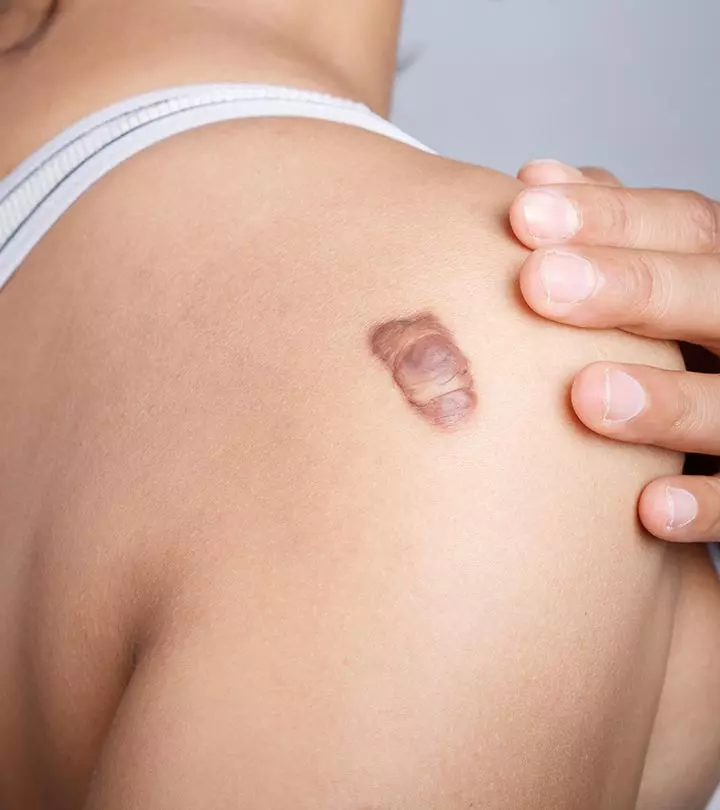
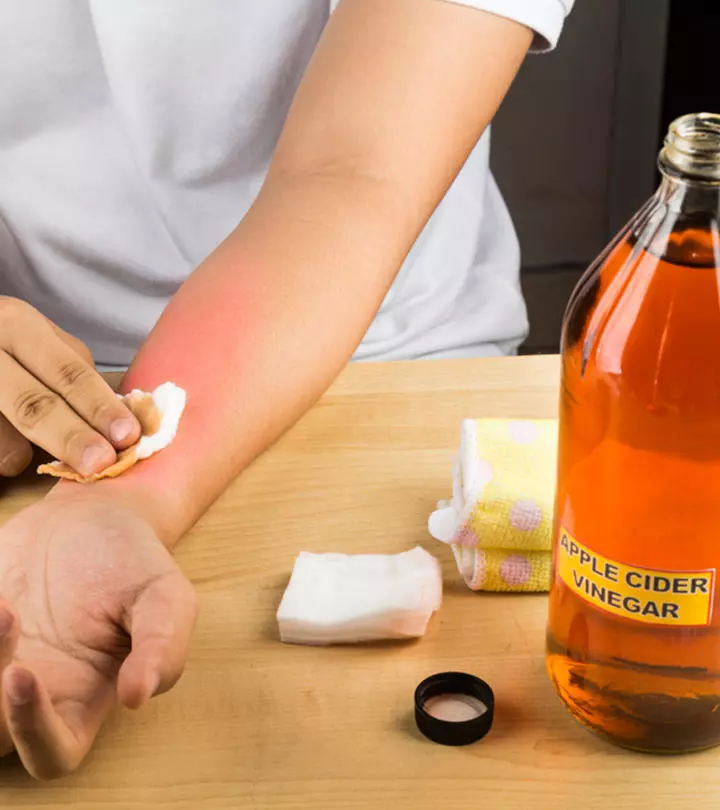

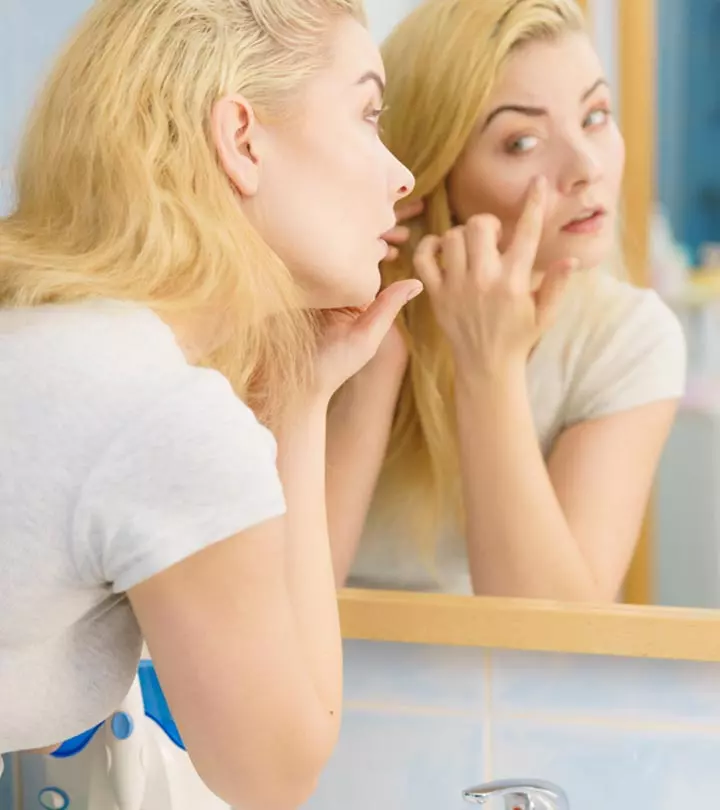

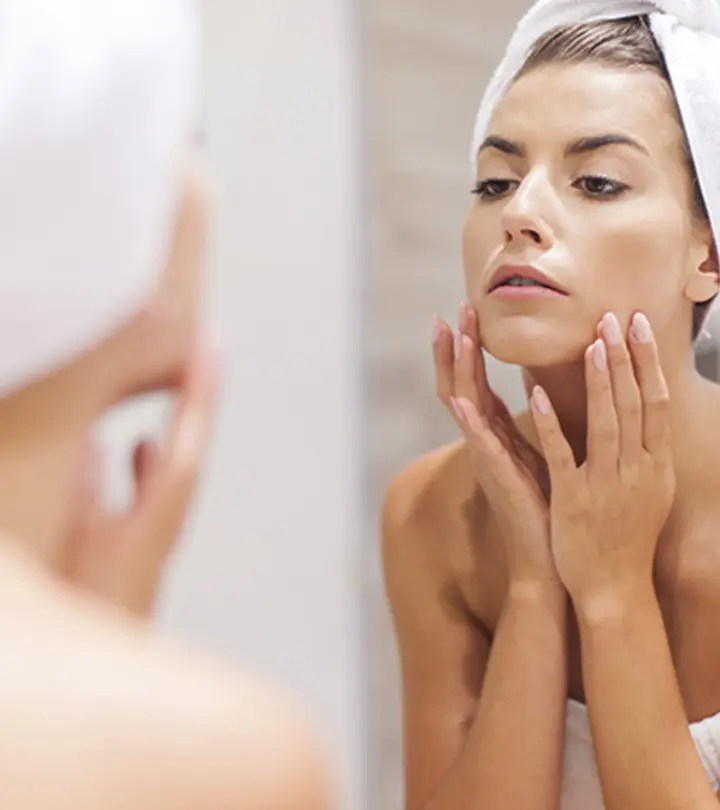






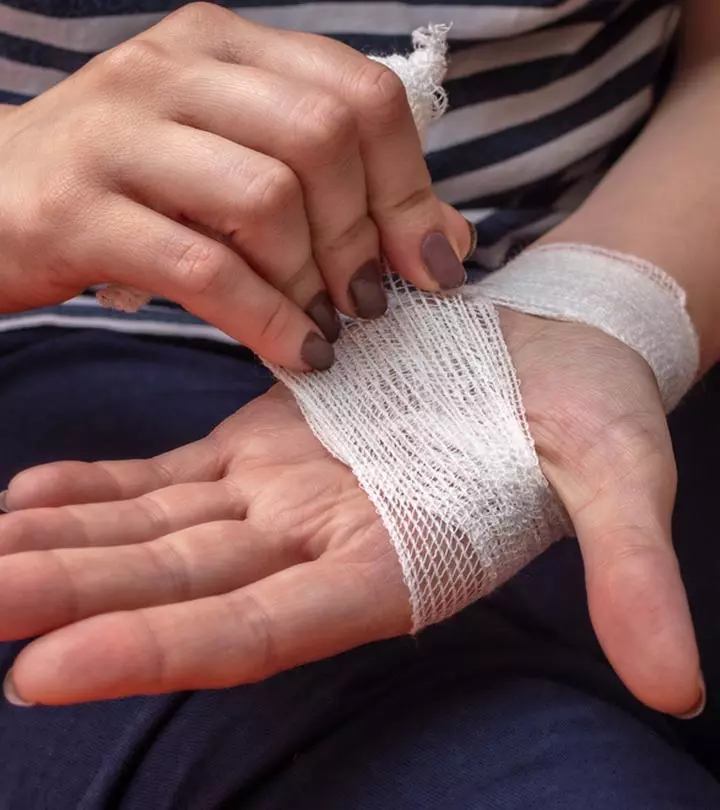


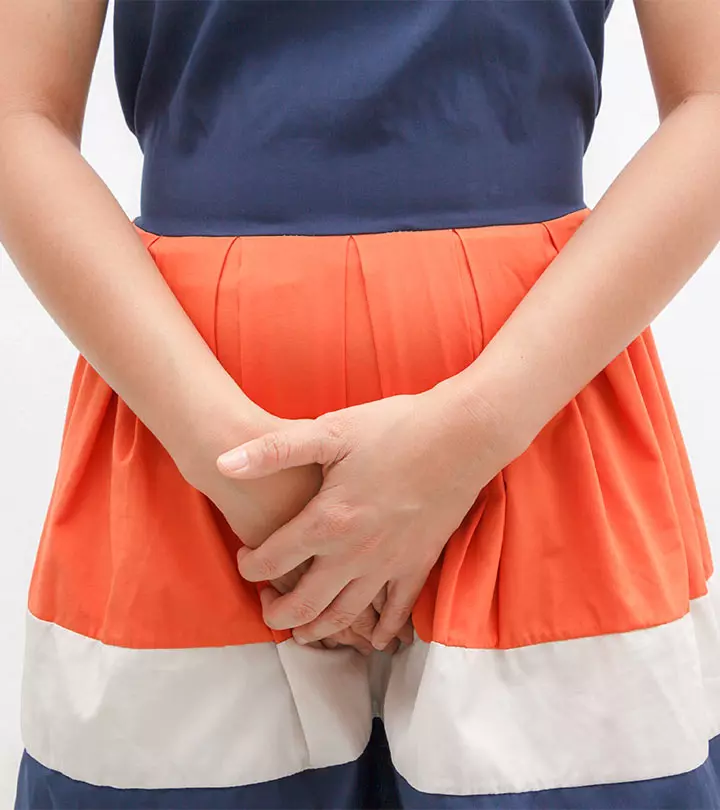

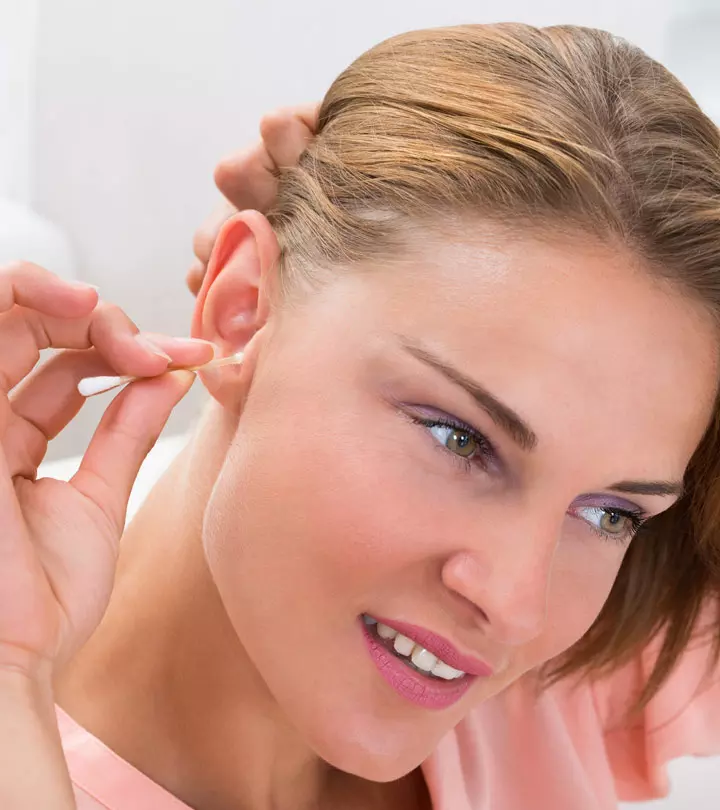


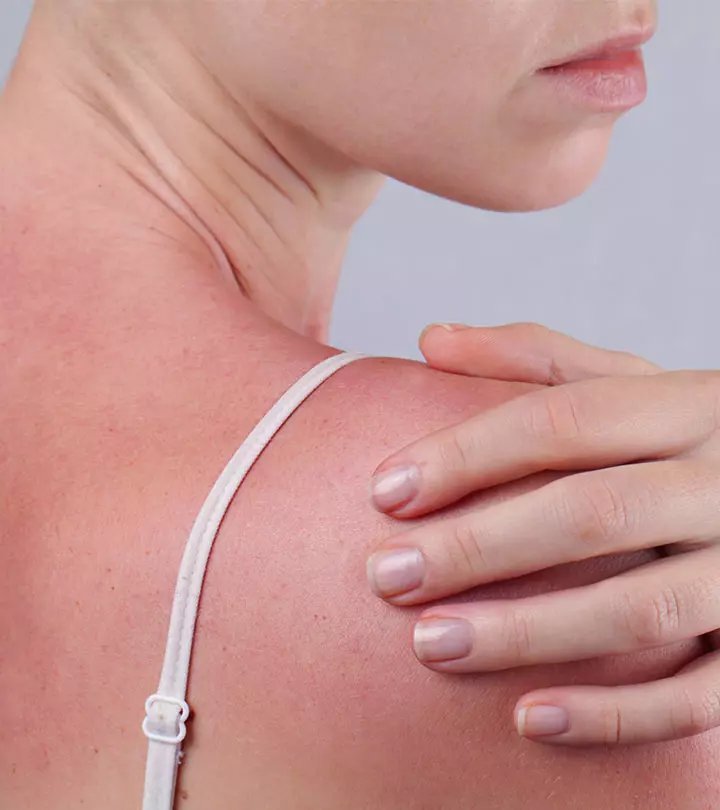
Community Experiences
Join the conversation and become a part of our empowering community! Share your stories, experiences, and insights to connect with other beauty, lifestyle, and health enthusiasts.